Hola comunidad #needlework, este es mi primer post dentro de la comunidad de HIVE y en esta ocasión me gustaría aprovechar para contarles una de mis anécdotas con el tejido.
Hello everybody, this is my first post in the HIVE community and I would like to take this opportunity to share with you one of my crochet stories.
No sé si a ustedes también les haya ocurrido, pero en lo que respecta a mí y a mi inexperiencia cuando apenas comenzaba a tejer era que no sabía cómo escoger mi estambre, es decir, hay tanta variedad de colores, texturas, marcas y demás que realmente me hacían sentir confundida.
I don't know if it has happened to you too, but regarding me and my inexperience when I was just starting in this world of crochet, I didn't know how to choose my yarn, I mean, there is so much variety of colors, textures, brands and others that really made me feel confused.
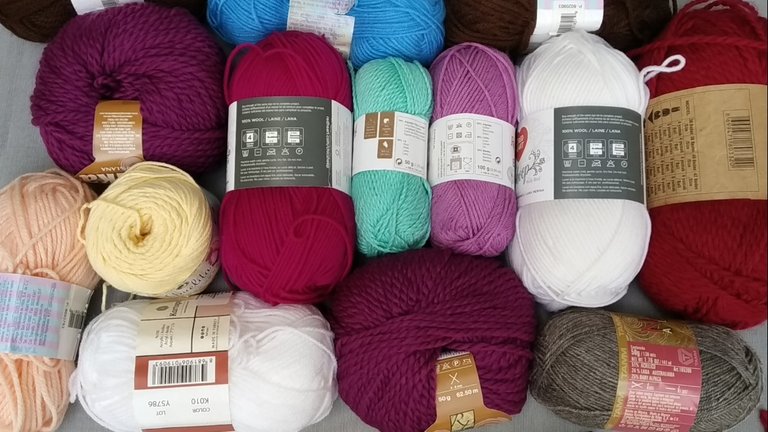
En ese entonces, la única información que encontraba era que el estambre que eligieras tenía que coincidir con el tamaño de ganchillo o agujas que ibas a utilizar, sobre todo el fijarte en la textura también era importante ¿se imaginan?
Back then, the only information I could find was that the yarn you chose had to match the size of crochet hook or needles you were going to use, especially the texture was also important, can you imagine?
Jamás hubiera pensado que detrás de un “simple estambre” existe diseño, ingeniería e investigación en el proceso de creación y no solamente hablo de las fibras que lo componen, sino también el hilado, el grosor, el color, los tratamientos y los tipos de tratamientos y si nos metemos más en el tema jamás acabaríamos.
En este post solo hablaré acerca de las fibras textiles, las cuales son lo más básico en las telas y tejidos, donde, en la antigüedad descubrieron por necesidad que podían retorcer un conjunto de fibras hasta formar un hilo fino y así ha ido evolucionando hasta lo que conocemos hoy.
I would never have thought that behind a "simple yarn" there is design, engineering and research in the creation process and I am not only talking about the fibers that compose it, but also the yarn spinning, the thickness, the color, the treatments and the types of treatments and if we get more into the subject we would never finish.
In this post I will only talk about textile fibers, which are the most basic in fabrics and textiles, where, in ancient times they discovered by necessity that they could twist a set of fibers to form a fine thread and so it has evolved to what we know today.
Lo maravilloso es que cada fibra tiene sus propiedades, ventajas y desventajas. Al investigar me di cuenta de que se dividen en tres importantes ramas:
The wonderful thing is that each fiber has its properties, advantages and disadvantages. While researching I realized that they are divided into three important branches:
Las fibras naturales, las cuales son obtenidas de la naturaleza, ya sea de origen vegetal o animal, como la lana y el algodón.
Natural fibers, which are obtained from nature, either of vegetable or animal origin, such as wool and cotton.
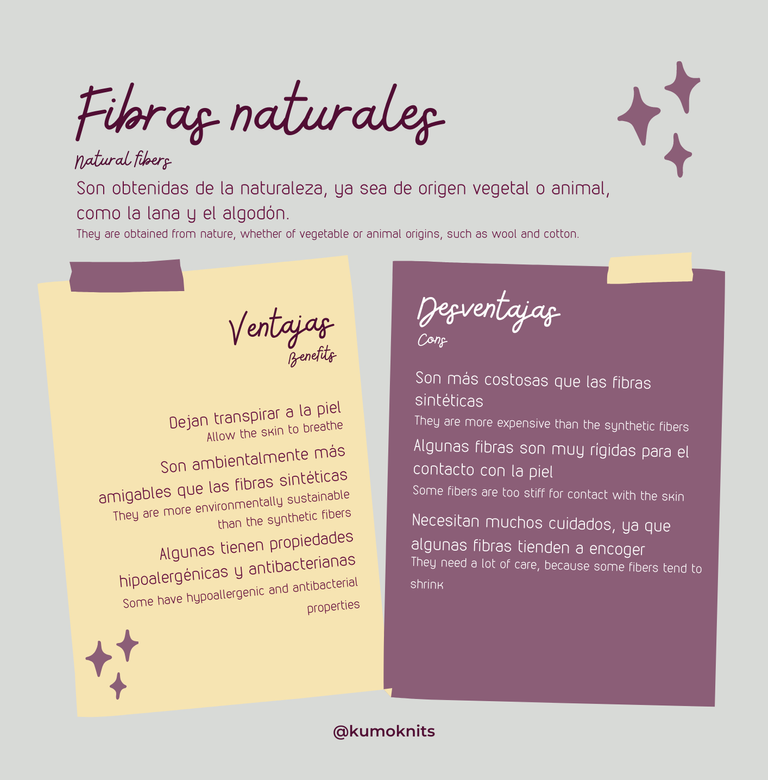
Las fibras sintéticas son las fibras que no existen en la naturaleza, sino que se obtienen de un proceso químico.
En esta clasificación entran el nylon, el acrílico, el poliéster y varias más.
Synthetic fibers are fibers that do not exist in nature, but are obtained from a chemical process. This classification includes nylon, acrylic, polyester and several others.
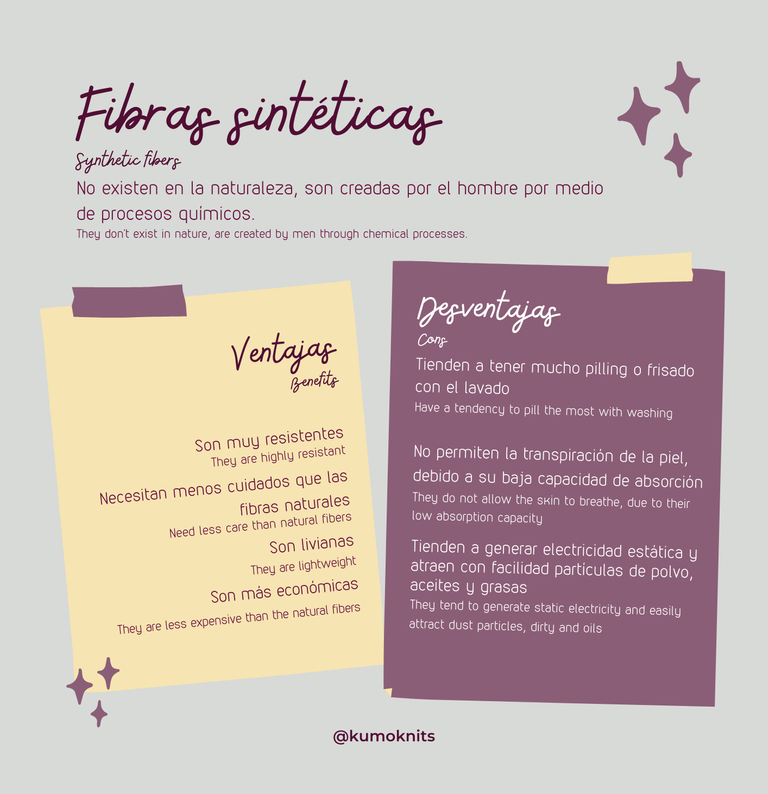
Y las fibras artificiales son las que su origen es natural, pero su proceso de obtención es químico, esta clasificación depende de cada país. Un ejemplo de estas fibras son las fibras celulósicas como el rayón-viscosa o el lyocell, también la llamada fibra de leche derivada de la caseína.
And the regenerated fibers are those that its origin is natural but its process of obtaining is chemical, this classification depends on each country. An example of these fibers are cellulosic fibers such as rayon-viscose or lyocell, also called milk fiber derived from casein.
Ninguna fibra es perfecta y por esa razón se procura realizar en los estambres una composición de varias mezclas de fibras, donde se puedan aprovechar sus ventajas y así puedan funcionar juntas mejorando su rendimiento. En el caso de las mezclas se cuenta con fibras principales y fibras secundarias, donde el estambre va a tener más propiedades y características de las fibras principales y las secundarias ayudan a complementar esas fibras principales.
No fiber is perfect, and for this reason, an attempt is made to make a composition of various fiber blends in the yarn, where their advantages can be used and they can work together to improve their performance. In the case of blends, there are main fibers and secondary fibers, where the yarn will have more properties and characteristics of the main fibers and the secondary fibers help to complement those main fibers.
Esta composición podemos encontrarla en la etiqueta del estambre, así podemos saber con qué tipo de fibras cuenta y qué propiedades podemos obtener de él:
This information can be found on the yarn label, so we can know what kind of fibers it has and what properties we can get from it:
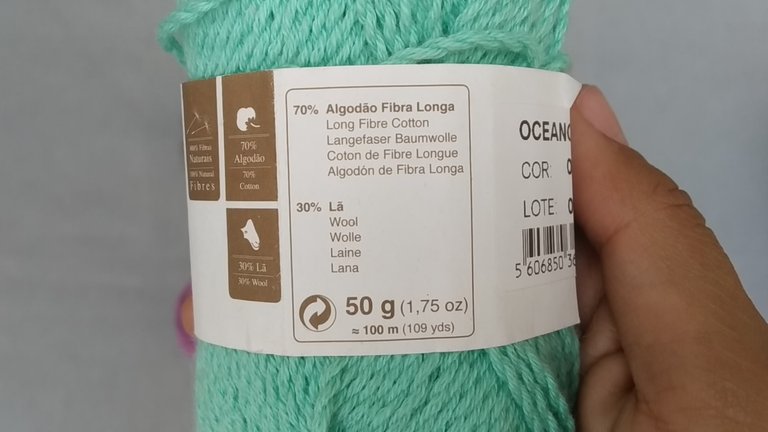
Una de las preguntas que me hago para elegir mis estambres es:
¿Qué es lo que voy a tejer?
Ya sea una bufanda, un bolso, una alfombra o lo que sea que teja, tiene ciertos requerimientos o un objetivo de uso. Por ejemplo, la bufanda yo la haría con el objetivo principal de cubrirme del frío y requiero que sea térmica, para esto elegiría un estambre que tenga una fibra natural térmica que regule la temperatura y permita transpirar a la piel como la lana merino; pero como la lana requiere muchos cuidados, elegiría un estambre que tenga esta fibra en combinación con otra que le dé facilidad al lavado y resistencia, como el acrílico.
One of the questions I ask myself when choosing my yarn is:
What am I going to knit?
Whether it's a scarf, a bag, a rug or whatever I knit, it has certain requirements or a purpose of use. For example, I would make the scarf with the main objective of covering myself from the cold and I require it to be thermal, for this I would choose a yarn that has a natural thermal fiber that regulates the temperature and allows the skin to perspire like merino wool; but as wool requires a lot of care, I would choose a yarn that has this fiber in combination with another one that gives ease of washing and resistance, like acrylic.
Para el bolso, en mi caso, su objetivo sería cargar objetos o guardar objetos pesados o no pesados y requiero que sea resistente, por lo que elegiría un estambre con composición de fibras sintéticas como el poliéster o el acrílico. Finalmente, la alfombra yo la haría con propósito decorativo y requiero que me dure mucho tiempo, así como que me facilite el lavado y secado de esta, por lo que elegiría un estambre de fibras sintéticas de nuevo, porque por su poca capacidad de absorción de estas fibras me permite que el secado de la alfombra sea rápido y al mismo tiempo tener una resistencia bastante aceptable.
For the bag, in my case, its purpose would be to carry objects or store heavy or not heavy objects and I require it to be resistant, so I would choose a yarn with synthetic fiber composition such as polyester or acrylic. Finally, I would make the rug for decorative purposes and I need it to last a long time, as well as to facilitate washing and drying, so I would choose a yarn of synthetic fibers again, because the low absorption capacity of these fibers allows me to dry the carpet quickly and at the same time have a fairly acceptable resistance
Al final, cada persona es libre de elegir el estambre que mejor considere. Pero lo que sí pude descubrir y posteriormente comprobar es que el tener en cuenta las ventajas y desventajas de cada fibra me ayudaba a hacer que mis proyectos tuvieran el desempeño que buscaba.
Espero que esta información les sirva para poder elegir sus estambres y poder utilizar sus propiedades de la mejor manera.
Si les es útil, hace un tiempo realicé un video en mis canales de Odysee y YouTube donde ahondo más acerca de este tema y de algunas fibras que utilizamos en los estambres.
Nota: El video está en español, por falta de tiempo y recursos no he podido traducirlo al inglés.
In the end, each person is free to choose the yarn he or she considers best. But what I was able to discover and later prove is that taking into account the advantages and disadvantages of each fiber helped me to make my projects have the performance I was looking for.
I hope this information helps you to choose your yarns and use their properties in the best way.
If you find it useful, some time ago I made a video in my channels where I delve more about this topic and some of the fibers we use in yarns.
Note: The video is in Spanish, due to lack of time and resources I have not been able to translate it into English.
En Odysee:
https://odysee.com/@kumoknits:4/%C2%BFc%C3%B3mo-escoger-el-estambre-adecuado:4
En YouTube:
Las fotos fueron tomadas por mí.
Photos taken by me
Las imágenes fueron creadas en Canva con recursos gratuitos.
Images created with Canva
Translated with www.DeepL.com/Translator (free version)
Fuentes/References:
Central Board of Secondary Education. (2013). Textile science. India: Kalyan Enterprises. Obtenido de http://cbseacademic.nic.in/web_material/Curriculum/Vocational/2018/Textile%20DesignT&P_XI_829.pdf
Lockuan Lavado, F. E. (2003). Fibras textiles. Obtenido de La industria textil y su control de calidad: https://fidel-lockuan.webs.com/
Pesok, J. C. (2005). Introducción a la tecnología textil. Obtenido de Facultad de ingeniería de Montevideo, Uruguay: https://sites.google.com/site/introtecnotextil/ii-fibras-textiles
Wadje, P. R. (2009). Textile – Fibre to Fabric Processing. Obtenido de https://admin.umt.edu.pk/Media/Site/STD/FileManager/OsamaArticle/january/jan26/Textile%20Fibre%20to%20Fabric%20Processing.pdf
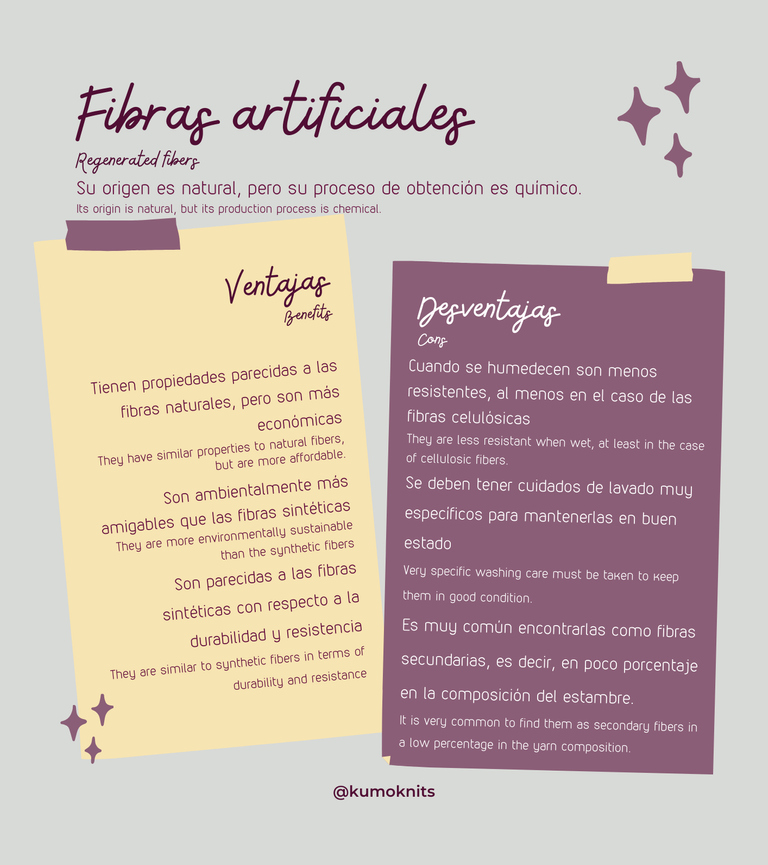
Hello again @kari2608! I can now officially welcome you to the NeedleWorkMonday Community! It’s nice to have you here.
Thank you for sharing such valuable information about yarn selection. This will be very good for those just starting out and a bit confused about choosing their yarns.
I remember when I first started I just grabbed the yarn I thought would look best for my project. After a few years I started paying close attention and then carefully selecting the proper yarn I needed for each project. Yarn selection does play a big factor in how our creations turn out and their longevity.
If you don’t mind me giving you a word of advice. It would be great if you did an introduction post sharing with the Hive Community who you are and maybe a little about your interests and what we might be seeing from you. You can use the tags #introduceyourself or #introducemyself in that post. This would help others know you are a real person (we have lots of issues with spammers and scams ) and be more comfortable with supporting your work. 😉
Sure! I'll do my contribution anti-spam giving a little I troduction about who I am and what I do. Thank you so much!!
Awesome!
Absolutely ;)
Hola @kari2608
Me uno a la calurosa bienvenida que te han dado a la comunidad. Que bueno que nos vamos a nutrir de contenidos que apoyarán nuestro continúo aprendizaje en el mundo del tejido.
Gracias por este contenido, el cual es súper valioso, este punto es fundamental conocerlo cuando se ingresa en este mundo del tejido, para mí los hilos son vida entre mis manos, me gusta conocerlo, me gusta saber que la pieza creada va ser perdurable en el tiempo, y para ello es fundamental cuando lo mencionas. Soy amante del hilo de algodón, pero si quiero hacer un bolso que duré mucho. lo ideal el acrílico, tal como nos comenta, definitivamente el criterio es importante a la hora de elegir el hilo.
Espero te sigas animando a compartir tus trabajos, estaré pendiente de leerlos,
Gracias. Que tengas un buen fin de semana.
Saludos
P.D: Gracias por el enlace al video
¡Hola!, interesante información. Este tema es realmente amplio y los vendedores muchas veces dicen cualquier cosa solo para vender. ¡Buenas vibras!.
Wow great 👍
Congratulations @kari2608! You have completed the following achievement on the Hive blockchain and have been rewarded with new badge(s) :
Your next target is to reach 100 upvotes.
You can view your badges on your board and compare yourself to others in the Ranking
If you no longer want to receive notifications, reply to this comment with the word
STOPCheck out the last post from @hivebuzz:
Hello @kari2608! This is @indayclara from @ocd (Original Content Decentralized) team. We saw that you already posted your first post here in Hive! Congratulations and welcome!
However the best way to start your journey here in Hive is do an awesome introduction post. Information like who are you and where you're from, how did you discover Hive or who invited you, what types of content you want to see here and the types that you want produce, and what are your expectations in this platform. There's no pressure on this. You can choose on whatever information you would like to share. As a sample of what an intro post is, you can refer to this intro posts for reference Keeping Up With the Buzz - My Introduction to the Hive Community
It's also best to subscribe to Communities you like and share your blogs there to have a wider range of audience. Or you can check out the Communities Incubation Program.If you are looking for tips and information as a Hive newbie, click here: Newbie guide.
Also, letting you know since content on the Hive platform is monetized, using other people’s ideas or images could be considered as an offense and which is also viewed in a serious light on the blockchain. Here is a useful collection of resources about how plagiarism and abuse is viewed and handled on Hive.
If you have questions, you can hop into Discord server and we'll gladly answer your questions. Feel free to tag @lovesniper @indayclara once you have made your awesome introduction post! See you around.